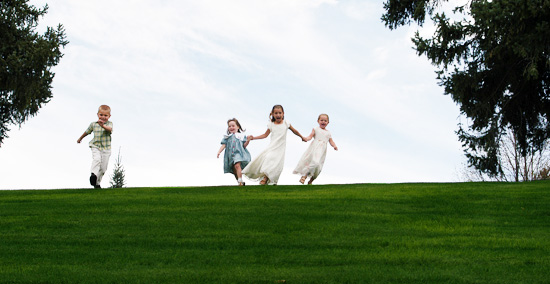
They say it's hard to teach an old dog new tricks, and this is never so true as in the case of adults who find it hard to change habits and characteristics that have been formed over a lifetime. And this is why it's imperative that we teach our children the importance of good habits right from childhood, when they're at a more malleable age and tend to listen to adults. Saving the environment may not be child's play, but it is a child’s place to get involved in the process.
There's a pressing need today to increase awareness of the crisis called global warming that's looming large and threatening the very existence of the earth. And there's no better time than now to educate our kids on the harm we human beings are causing the environment with our indiscriminate and irresponsible use of energy and other resources. If your children understand today how important it is that we save the environment from ourselves, they will have learnt a valuable lesson for life. If not, there's a serious chance that they may not have a world to leave behind for their children and future generations to come. Here's how kids can contribute to saving the environment:
Turn out the lights and other electrical appliances when they're not in use. Energy not used is energy saved.
Pick up litter and recycle stuff like paper and metal cans, bottles and cardboard. Recycling helps save on the amount of trash we send to landfills and also conserves natural resources like aluminum and trees.
Use water sparingly and close the taps tightly so that there are no leaks.
Ride a bike, take a bus, carpool or walk to school rather than get mom to drive them over.
Plant trees with their parents or as an initiative at school. Trees are good for the environment because they create oxygen, prevent erosion of the soil, create homes for wildlife, save on air conditioning and heating costs depending on the season, and regulate climate change.
Take part in neighborhood and school green programs.
Get parents to buy and eat only organic food.
Take a quick shower to conserve water.
Use notebooks without wasting paper.
Take a lunch box to school rather than a paper bag.
Use green pencils that are made of wood certified by the Forest Stewardship Council.
Go on green vacations to places near you.
Eat food that is produced locally.
Send emails rather than letters and cards that use up paper and fuel to get to their destination.
Buy gadgets that are energy efficient and come with the Energy Star rating.
Buy recyclable products that have the three-arrow-circle recyclable mark.
Getting kids involved in doing their bit towards the environment will go a long way in changing the way they live and in the choices they make.
This post was contributed by Heather Johnson, who writes on the subject of green shopping. She invites your feedback at heatherjohnson2323 at gmail dot com.
Image above is based on a photo by a4gpa.
Recommended Comments
Join the conversation
You can post now and register later. If you have an account, sign in now to post with your account.